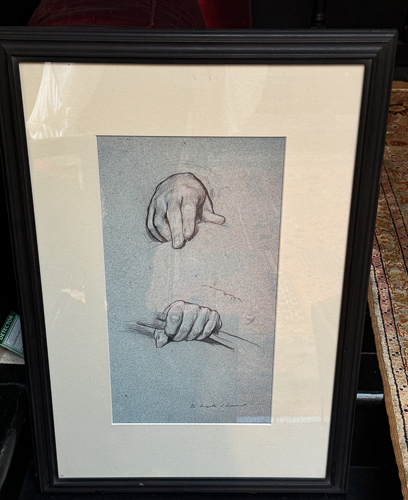July 2024
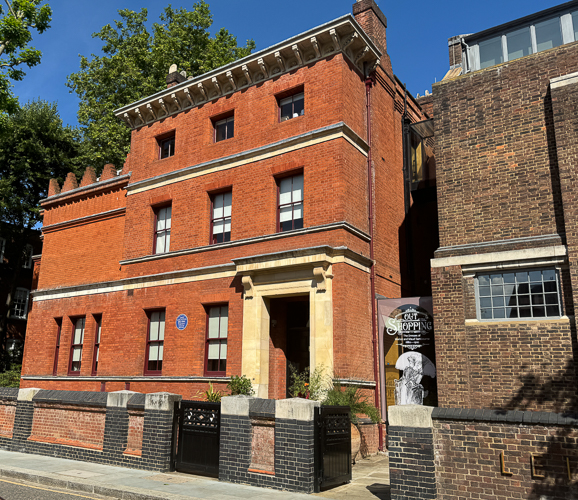
Leighton House is part of Holland Circle but deserves a post of its own.
Leighton House was once the home of painter Frederic Leighton, 1st Baron Leighton (1830–1896). Leighton commissioned the architect and designer George Aitchison to build a combined home and studio for him. On the ground floor is a spectacular tile-covered Qa’a or room.
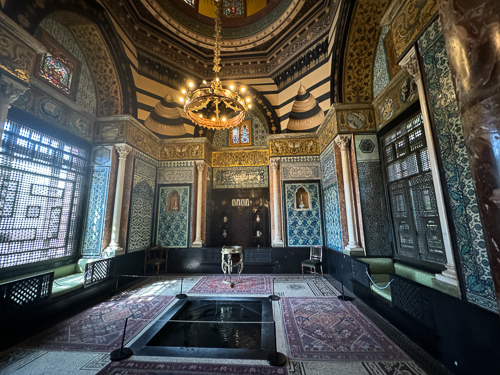
The Qa’a
According to the architect, the design was based on the palace of La Zisa in Palermo. The room contains 17th-century tiles and carved wooden lattice-work windows of the same period from Damascus. There are also large 16th-century Turkish tiles. The west wall has a wooden alcove with inset 14th-century tiles.
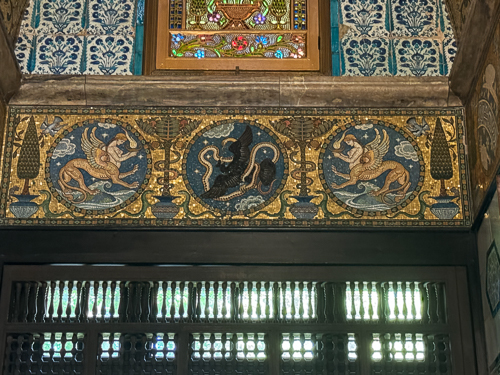
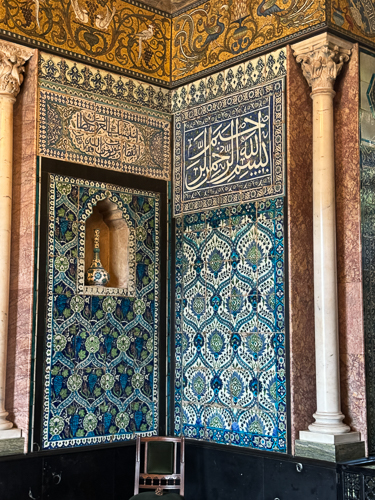
The room also contains Victorian elements. The capitals of the smaller columns are by Sir Joseph Boehm, from Aitchison’s designs.
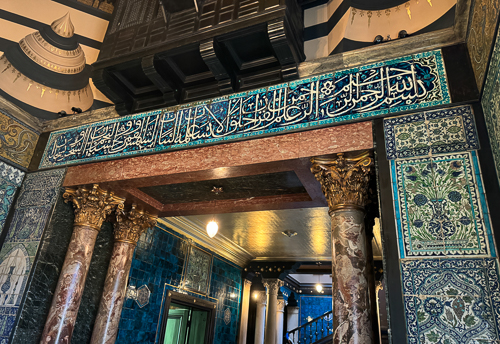 *
*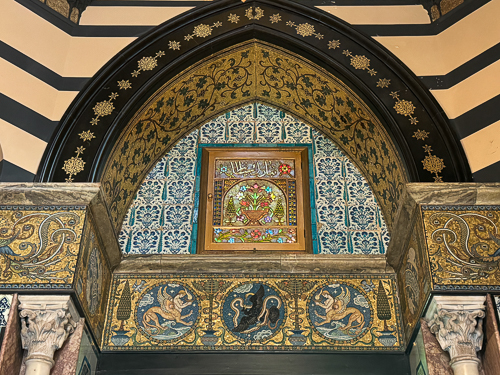
*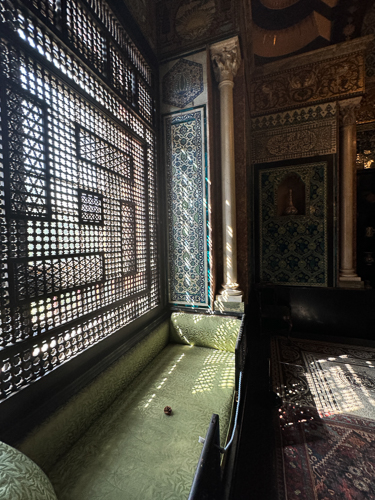 *
*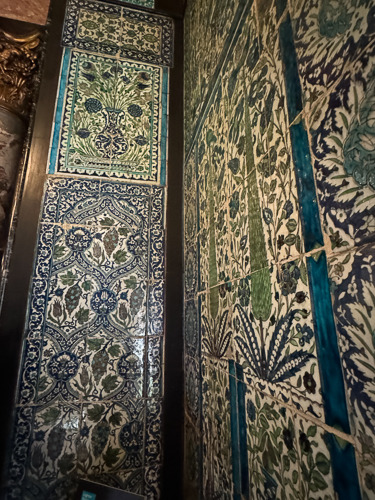 *
*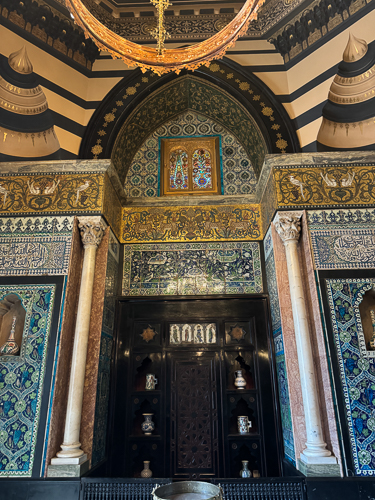
*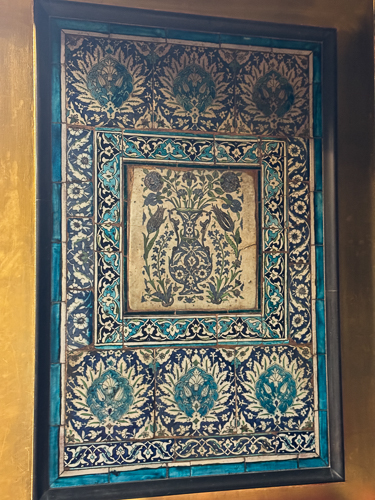 *
*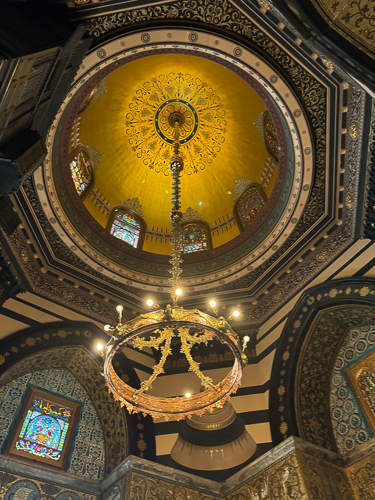
The tiles continue up the stairway
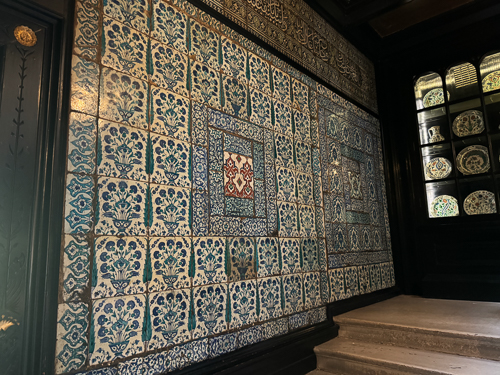
*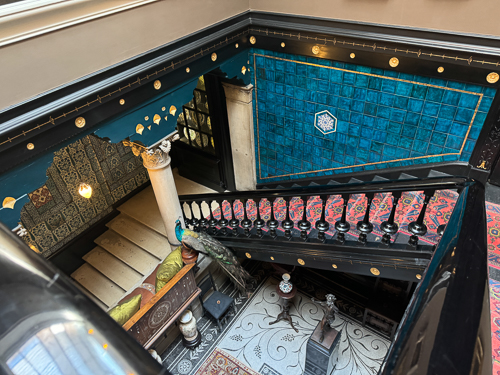
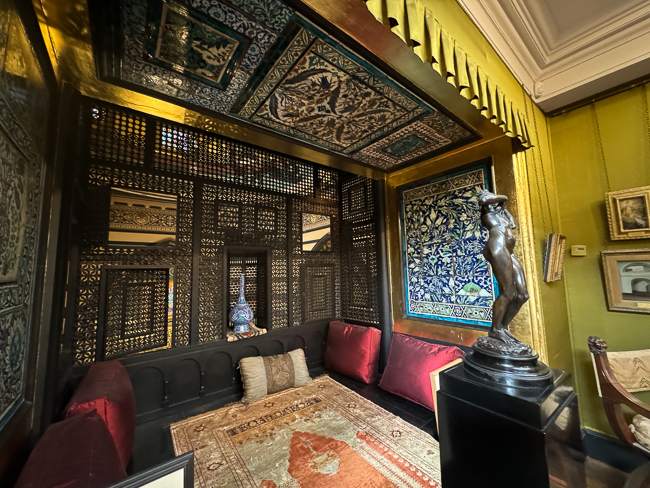
The 2nd story has an alcove of tiles and looks down upon the Qa’a
William DeMorgan was brought in to replicate a tile that went missing when this mural was shipped from Damascus.
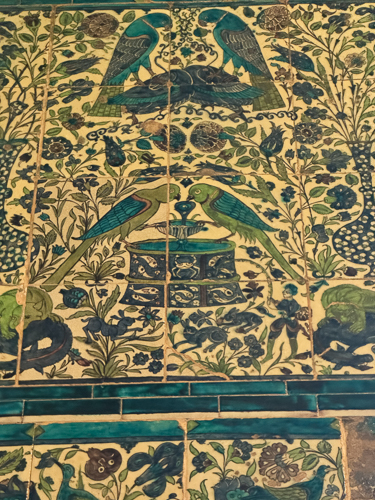
William De Morgan recreated the tile containing the parrot on the bottom left.
William De Morgan (1839 – 1917) is often remembered as a friend of William Morris, but he was so much more. He was an inventive and innovative designer of the Arts and Crafts Movement.
He began his formal training as a fine artist before being led by his scientific and mathematical investigations into the decorative arts. He created stained glass, designed his own kilns, and undertook investigations in chemistry to create innovative luster glazes. These experimentations led to the famous blue tiles found in Leighton House as he tried to find the blue for the parrot tile. His collection of Lusterware can be found in the home and in many museums.
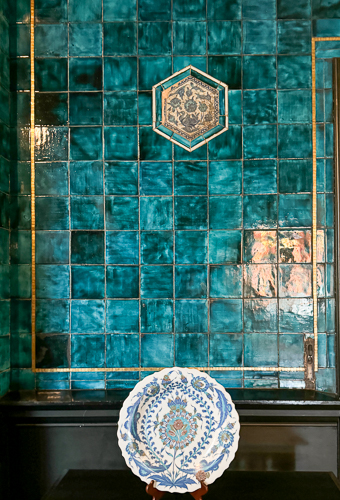
*
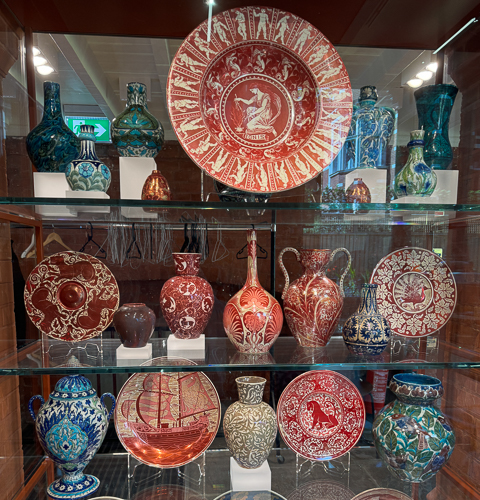
A collection of William De Morgan Luster ware
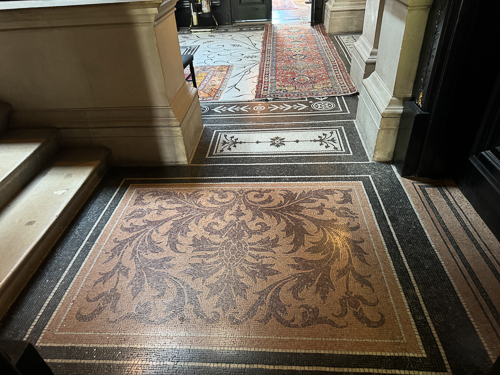
Tile Floors of the Leighton House
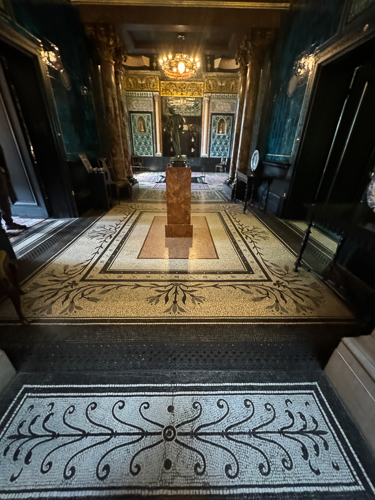
*
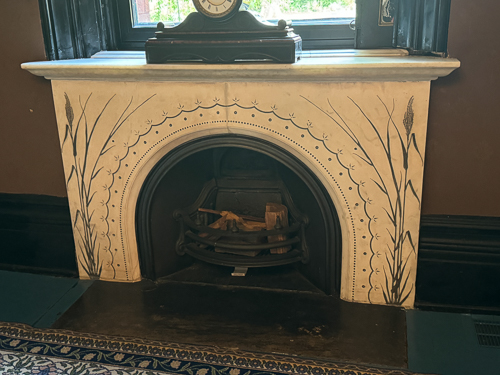
A fireplace in the Leighton House
Leighton is best known for his Flaming June in the Museo de Arte de Ponce. I found his study sketches truly magical.
 *
*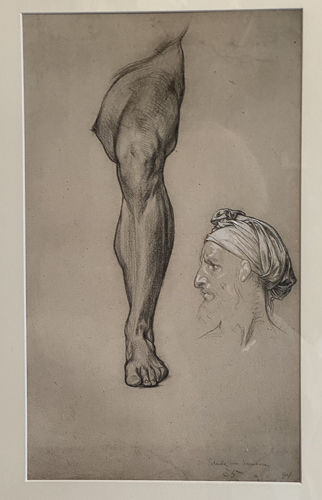
*